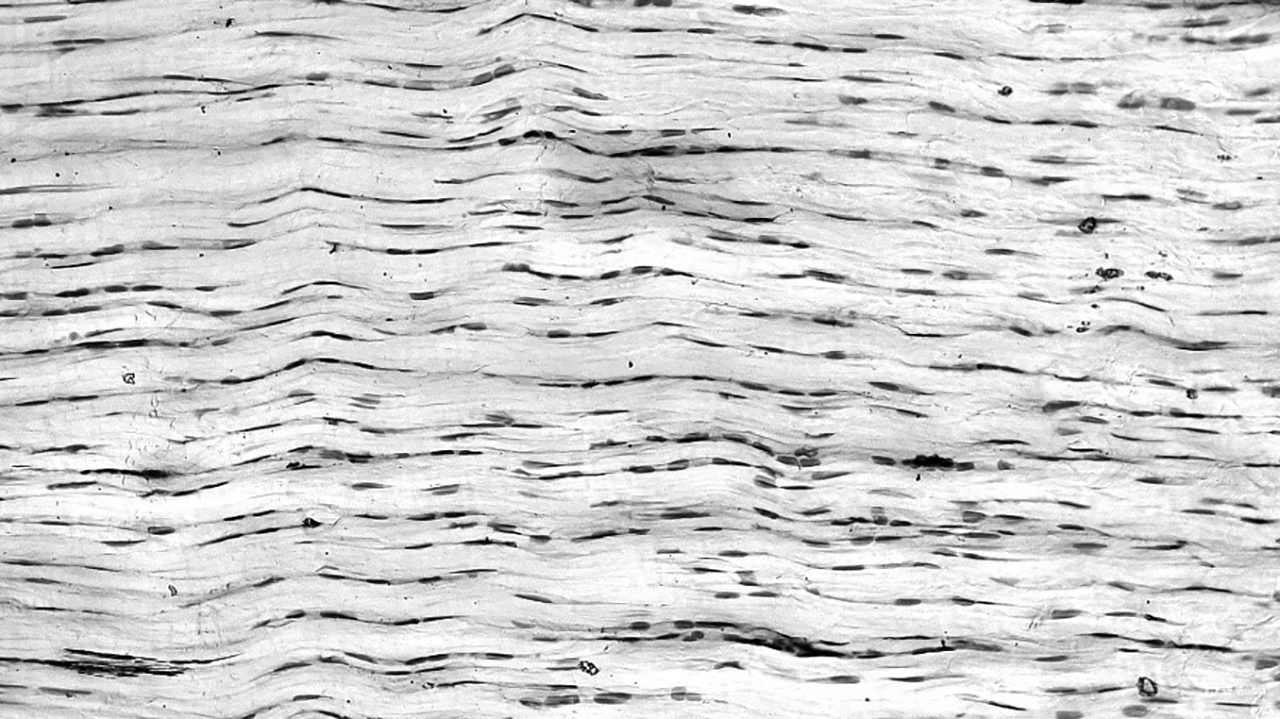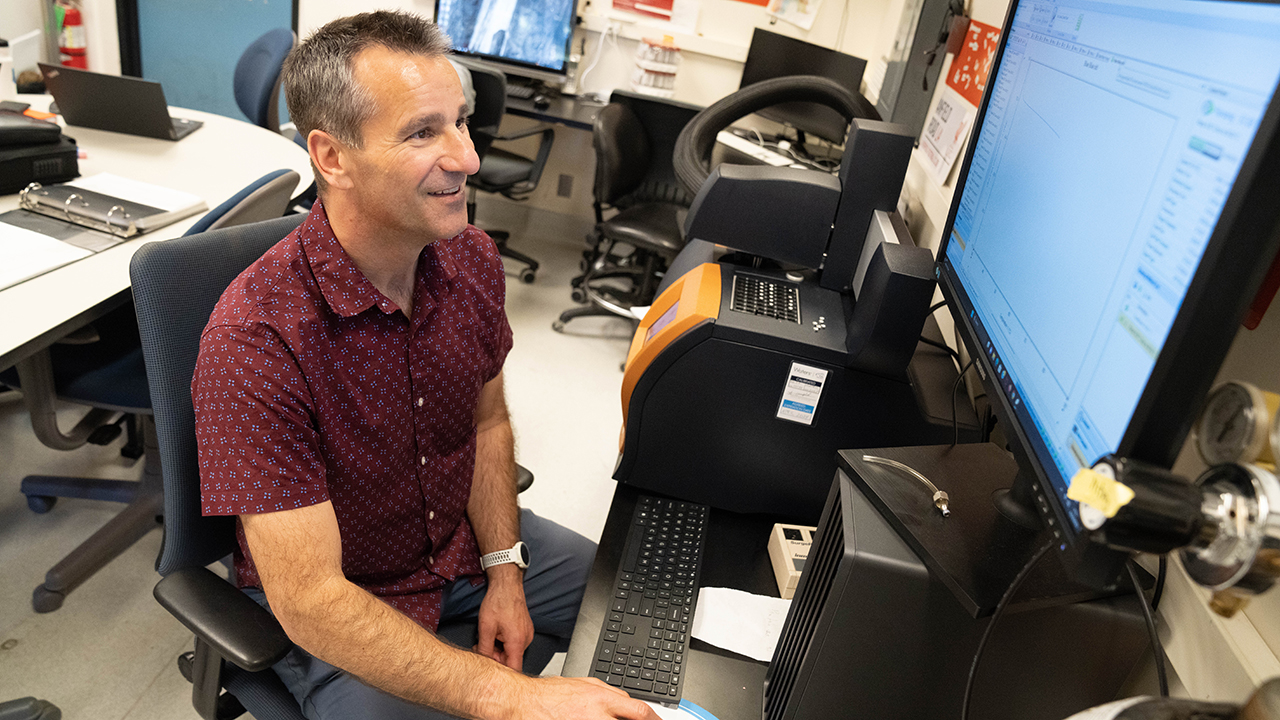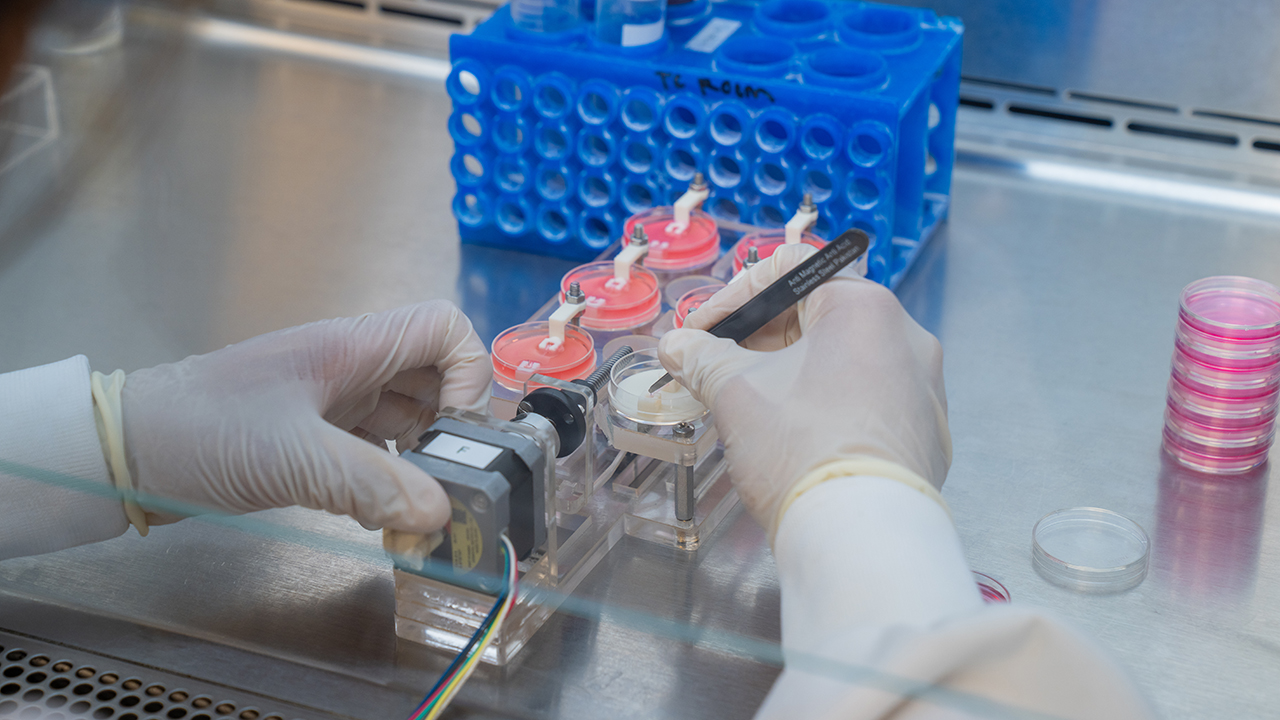
How Our Muscles, Tendons and Ligaments Respond to Exercise and Recover from Injury
Professor Keith Baar on using physiology to help people move better, for longer
Each year, more money is spent in the U.S. on musculoskeletal pain than on heart disease and diabetes combined. Exercise physiologist Keith Baar, a professor of Neurobiology, Physiology and Behavior and Physiology and Membrane Biology, is working to change that.
“My lab is concerned with helping people move well throughout their lives,” said Baar. “We're using an understanding of basic science principles to change a lot of how physical therapy is done. If we can help people move better, we can decrease diseases like diabetes and heart disease. In fact, if you rupture your ACL, you're 50% more likely to have a heart attack than somebody who hasn't.”

From basic research to the clinic, gym, and track
Baar’s lab uses a combination of methods to understand how muscles, tendons, and ligaments respond to exercise and nutrition, including molecular and genetic studies, rat models, and human studies.
Baar, who joined UC Davis in 2009, first began studying exercise physiology to understand his own limitations as an athlete.
“I was a very good athlete, and I wanted to know why I wasn't a great athlete,” said Baar. “A lot of people enter my field to try and figure out what's holding them back from performing at the world-class level.”
And though he often works with elite athletes — including professional rock climbers, the Denver Broncos, USA Track and Field, and the Chelsea football club — Baar’s work applies to everyone.
“In the last 10 years, my lab has been shifting towards studying tendons and ligaments, because more than 70% of us will suffer a significant tendon injury during our life that will limit our ability to do the things we love,” said Baar.

Exercising smarter, not harder
Baar’s lab has shown that static, controlled forms of exercise, such as planks or wall sits, can be just as powerful as high impact exercises like running. Specifically, they’ve shown that holding static positions for 10 to 30 seconds at a time — which is known as isometric exercise — can help people recover completely from tendon and ligament injuries, which was previously thought to be impossible. During these longer holds, your tendons begin to relax, which means your muscles have to work harder to hold you in place. At the molecular level, this type of exercise stimulates muscle, tendon, and ligament production and alters how genes are switched on or off within the tissues.
“Isometric exercises can fix tendons and ligaments, even though people thought for years that you couldn't fix these tissues,” said Baar. “We’ve shown that two 15-minute isometric exercise sessions - one in the morning and one in the evening - can actually yield greater benefits than a single 30-minute standard PT session,” said Baar.
These exercises are also a good entry point for people who are older, new to exercise, or who have an underlying metabolic condition. “If grandma wants to maintain the daily routine she's always had, these are the things that she can do to get stronger and keep her activity level the same,” said Baar.

Lab-grown ligaments
To better understand these tissues, Baar and his team developed a way to grow them from the remnants of human ACL reconstructive surgeries performed at the UC Davis Medical Center.
“From that little piece of ACL, we can make about a thousand engineered ligaments,” said Baar. “And from there, we can exercise them, we can give them different nutrition, we can give them drugs, we can look at their gene expression and which proteins they make — we basically have total control over these little engineered ligaments.”
Using these lab-grown ligaments, Baar’s team showed that tendons and ligaments stop responding to exercise after only about ten minutes.
“Your bones, tendons, ligaments, and cartilage stop getting the signal to get stronger after about five or ten minutes of exercise,” said Baar. “After that, they accumulate more wear and tear, but get no further signal to get better. We’ve used this knowledge to inform our recommendations for elite athletes who've experienced injury. Instead of removing training, we add a small amount of training that's optimized for the connective tissues, and that keeps them healthy and allows them to train harder for longer.”
Baar’s work has been funded by the National Institutes of Health as well as donations from the Clara Wu and Joe Tsai Foundation and Human Performance Alliance. His research has utilized several UC Davis research core facilities, including UC Davis Genome Center and the Bioinformatics Core Facility.
Media Resources
- Liana Wait is a freelance science writer based in Philadelphia. She has a Ph.D. in ecology and evolutionary biology and specializes in writing about the life sciences.
